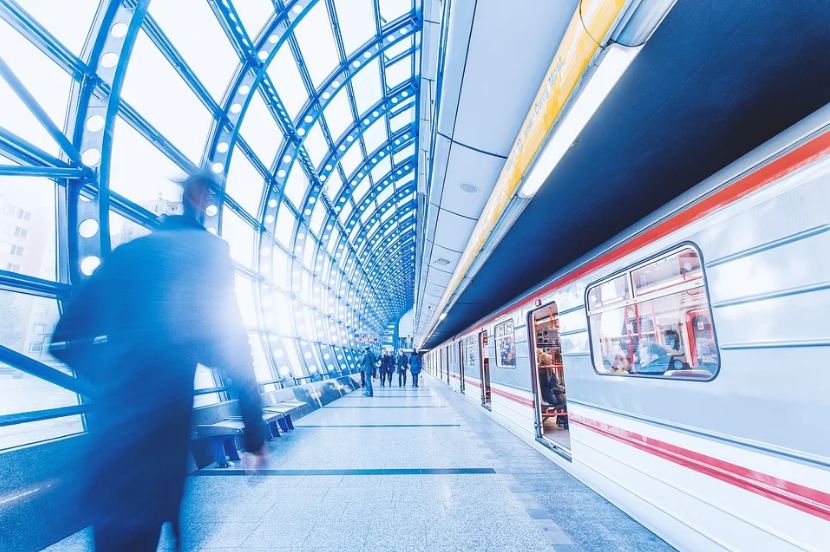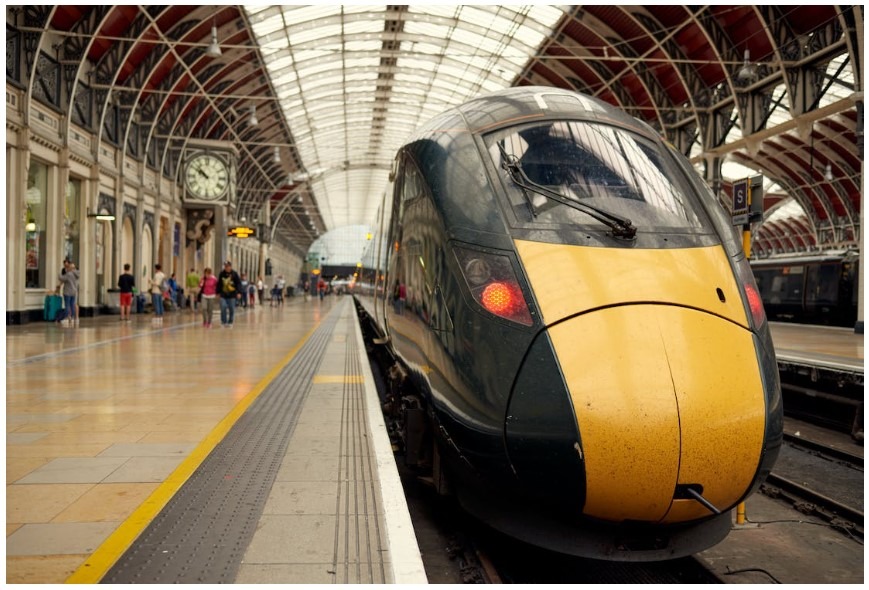Learn About the Fastest Train In the World - the L0 Series Maglev
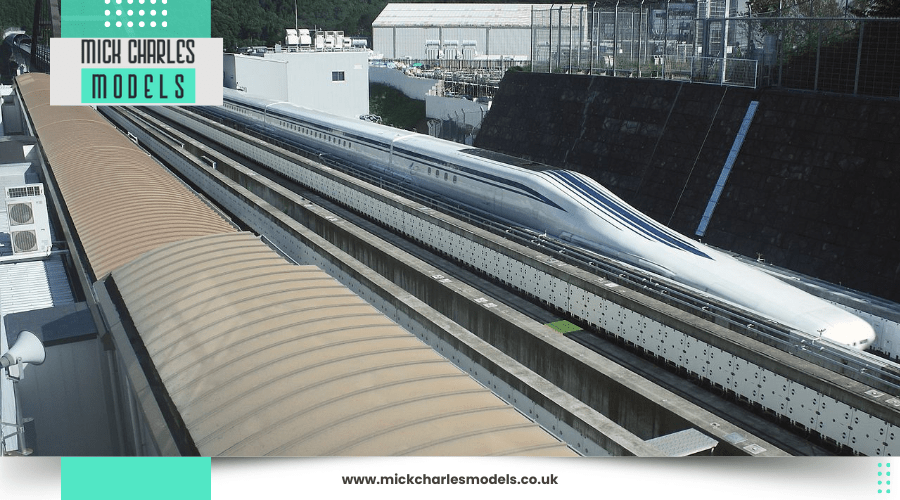
Japan's L0 Series Maglev is the world's fastest train, reaching an incredible 603 km/h (375 mph). You'll find this engineering marvel uses superconducting magnets to levitate 100mm above the track, switching from rubber wheels to magnetic levitation at speeds over 150 km/h. It's set to revolutionize travel between Tokyo and Nagoya, cutting the expedition to just 40 minutes. The pioneering technology behind this record-breaking train reveals an exciting future for rail transportation.
Image: Saruno Hirobano, Series L0, CC BY-SA 3.0
Breaking Speed Records: The L0 Series Achievement
Since its novel test trials, the L0 Series Maglev has shattered multiple world records, achieving an unparalleled speed of 603 km/h (375 mph) for a manned rail vehicle. You'll find this extraordinary Japanese maglev train surpassing every previous Shinkansen speed record, setting a new standard in rail transportation.
The L0 Series hasn't just broken the land speed record; it's also demonstrated incredible endurance. In 2015, you would've witnessed its impressive feat of covering 4,064 km in a single day, marking the longest distance ever traveled by a manned rail vehicle. With its state-of-the-art inductive power collection system and ability to reach operational speeds of 590 km/h, the L0 Series has outperformed existing maglev systems in Shanghai and South Korea, cementing Japan's position at the forefront of high-speed rail technology. This revolutionary achievement stands in stark contrast to early steam locomotive design, which prioritized power and reliability over extreme speed capabilities.
Engineering Marvel: How Maglev Technology Works
Behind the L0 Series Maglev's record-breaking speeds lies three astonishing engineering principles that make magnetic levitation possible. The train's superconducting magnets interact with electromagnetic coils embedded in the track, creating electrodynamic suspension that lifts the vehicle 100 mm above the ground. When you're traveling at speeds over 150 km/h, the train shifts from conventional rubber wheels to magnetic levitation, dramatically reducing friction and energy use.
The propulsion system's brilliance lies in its electrified track coils, which generate a moving magnetic field that pulls the train forward at incredible velocities. You'll find another innovative feature in the train's wireless power collection system - it draws electricity from the track inductively, much like your smartphone charges wirelessly, ensuring continuous power for this engineering marvel. The train's streamlined bullet design enables it to slice through air with minimal resistance, maximizing its revolutionary speed capabilities.
Design Features and Technical Specifications
While most high-speed trains prioritize aerodynamics, the L0 Series Maglev takes this concept to new heights with its striking 15-meter nose design. You'll find this remarkable high-speed rail system achieves speeds up to 603 km/h, making it the world's fastest train. The L0's magnetic levitation system is truly innovative - it starts on rubber wheels and transitions to floating 100 mm above the track once you're traveling faster than 150 km/h.
The train's superconducting magnetic technology enables a planned commercial speed of 505 km/h, which will get you from Tokyo to Nagoya in just 40 minutes. To overcome Japan's challenging terrain, you'll travel through tunnels for 80% of your expedition on the Chūō Shinkansen line, showcasing the incredible engineering behind this pioneering transportation system. The train incorporates sophisticated crash energy management systems to ensure passenger safety at these unprecedented speeds.
The Tokyo-Osaka Route: Journey Times and Infrastructure
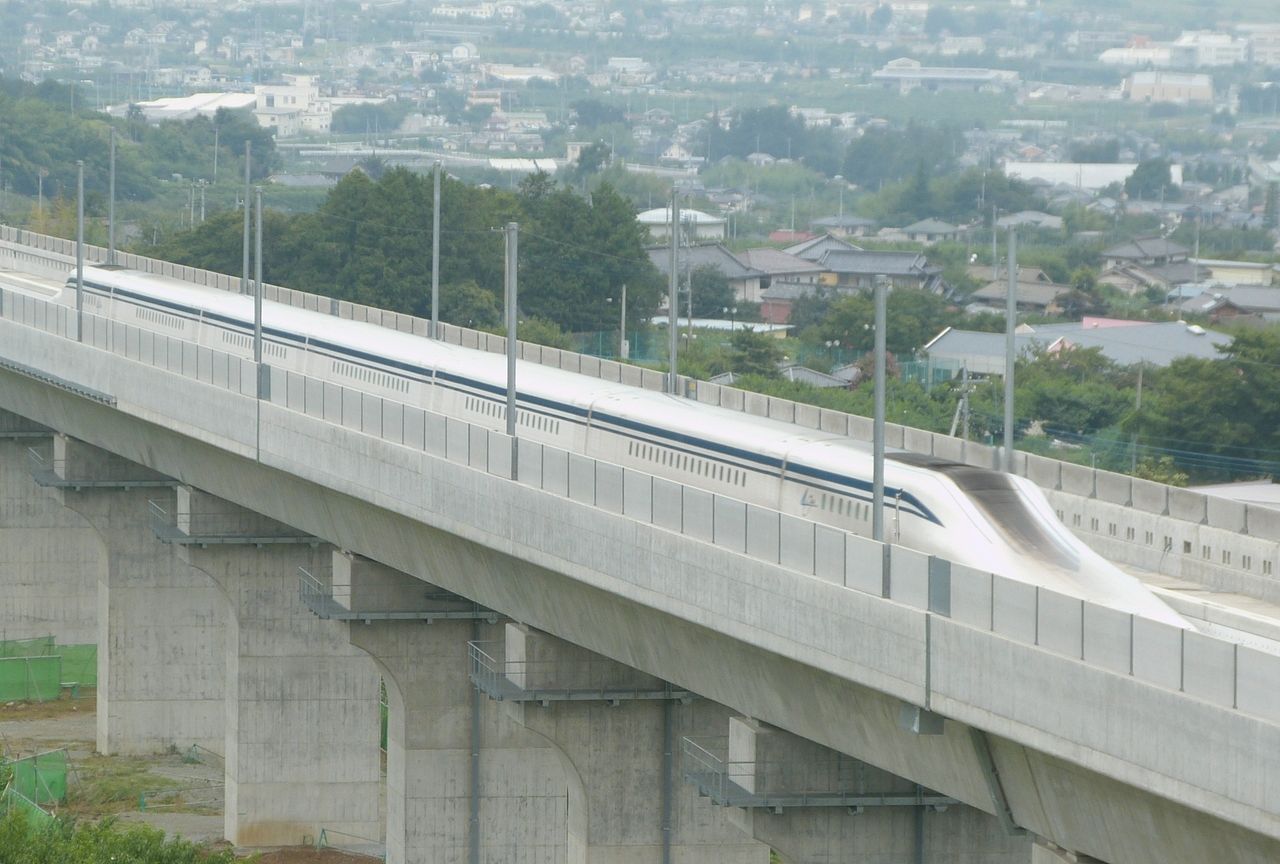
Image: Hisagi, JR Central SCMaglev L0 Series Shinkansen 201408081002, CC BY-SA 4.0
The ambitious Tokyo-Osaka route represents an extraordinary feat of modern railway engineering. You'll experience the world's fastest train service as the Maglev whisks you between cities at an incredible 505 km/h. The Chūō Shinkansen will dramatically cut travel times, getting you from Tokyo to Nagoya in just 40 minutes and to Osaka in only 1 hour 7 minutes.
Key features of this revolutionary route include:
- 80% of the 286 km track runs underground through Japan's challenging terrain
- 6 strategically placed stations connect major urban centers
- A blend of tunnels, bridges, and rail beds guarantees optimal performance
- ¥9 trillion investment, including a ¥3 trillion government loan
This massive infrastructure project showcases Japan's commitment to advancing rail technology while overcoming significant geographical challenges.
Testing and Development Milestones
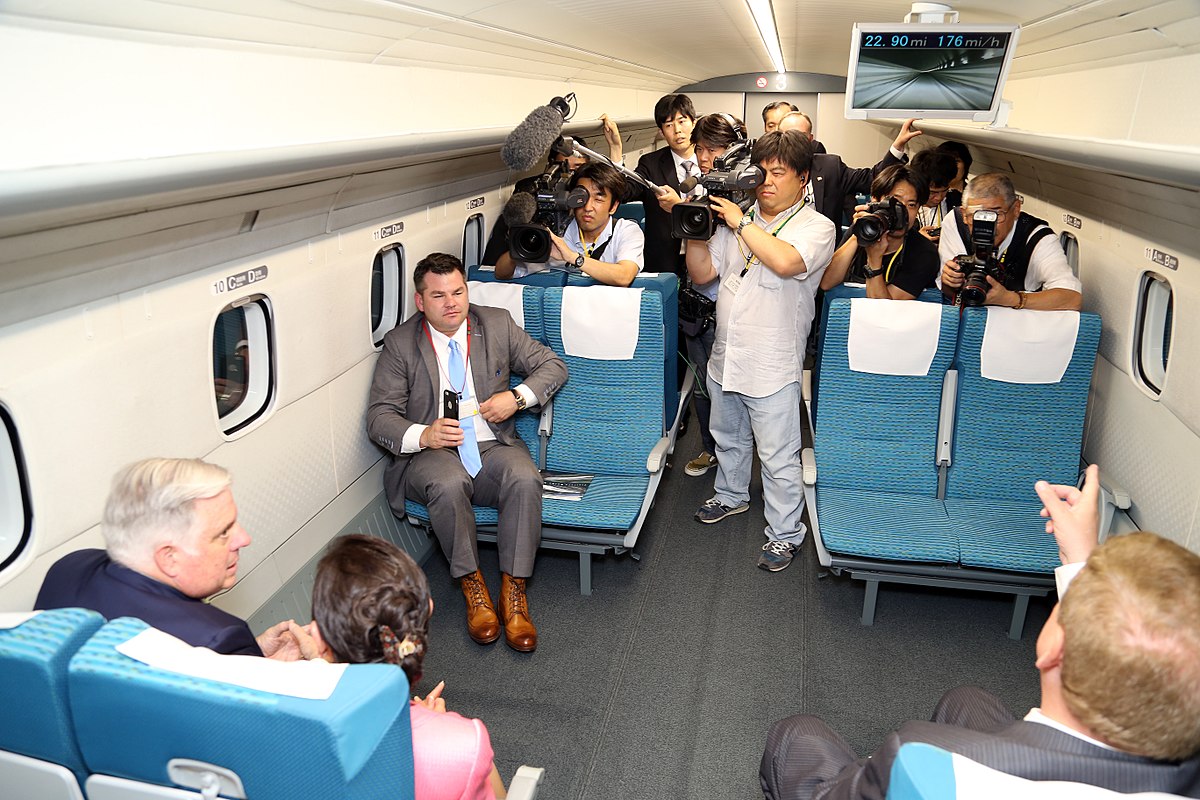
Image: Maryland GovPics, SC Maglev Test Ride (18278623709), CC BY 2.0
Through years of thorough testing, Japan's L0 Series Maglev has proven its exceptional capabilities and safety standards. During the development phase, engineers conducted substantial integration tests to guarantee all subsystems worked seamlessly together.
You'll find that the maglev train underwent extensive environmental testing to verify its resilience against harsh weather conditions. The series of dynamic tests confirmed the train's impressive propulsion system performance at speeds reaching 501 kph. Critical stability tests validated the magnetic levitation system's effectiveness under various loads and operating conditions.
To ensure long-term reliability, the test program included endurance trials that monitored essential components during extended operation periods. These rigorous evaluations helped identify potential wear patterns and guarantee the train's systems maintained peak performance throughout continuous service.
Safety Innovations and Passenger Experience
Featuring state-of-the-art safety innovations, Japan's L0 Series Maglev delivers an unparalleled passenger experience that combines security with comfort. You'll benefit from real-time monitoring systems and automated emergency braking that guarantee your journey's safety.
The train's superconducting magnetic levitation technology provides you with a smooth, virtually friction-free ride, while its aerodynamic design with a 15-meter nose cuts through the air efficiently.
When you ride the L0 Series Maglev, you'll enjoy:
- Near-silent operation thanks to magnetic levitation technology
- Minimal vibrations for a stable, comfortable voyage
- Protection from severe weather conditions through advanced stability systems
- Continuous safety monitoring that anticipates and prevents potential issues
The extensive testing and validation processes mean you can trust in the train's safety and reliability during your high-speed excursion.
Environmental Impact and Energy Efficiency
While pushing the boundaries of speed and technology, Japan's L0 Series Maglev sets new standards for environmental sustainability in high-speed rail transport.
You'll find exceptional energy efficiency in the maglev's design, from its sleek aerodynamics to its innovative magnetic levitation system. The train recovers energy through regenerative braking, making it even more eco-friendly.
With 80% of the Chūō Shinkansen line running underground, you won't see significant disruption to Japan's environment or wildlife.
When compared to traditional transportation methods like air travel or conventional high-speed rail, the L0 Series demonstrates superior environmental performance throughout its life cycle. The railway company's commitment to minimizing noise and vibration guarantees the maglev operates harmoniously with its surroundings, proving that cutting-edge speed and environmental responsibility can coexist.
Global Impact on High-Speed Rail Development
As Japan's L0 Series Maglev continues to break speed records, its impact echoes across the global transportation panorama. You'll find that this innovative achievement has sparked worldwide interest in maglev technology, inspiring nations to reimagine their high-speed rail systems. The Chūō Shinkansen project serves as a blueprint for countries looking to revolutionize their transportation infrastructure.
The global impact of the L0 Series extends beyond mere inspiration:
- Countries like the United States are actively exploring maglev implementations for their own networks
- The train's technological innovations have set new benchmarks for energy efficiency and speed
- Its success has renewed international focus on sustainable transportation solutions
- The project demonstrates how high-speed rail can alter regional connectivity and economic growth
This pioneering system isn't just reshaping Japan's future - it's influencing transportation development worldwide.
Future Expansion and International Projects
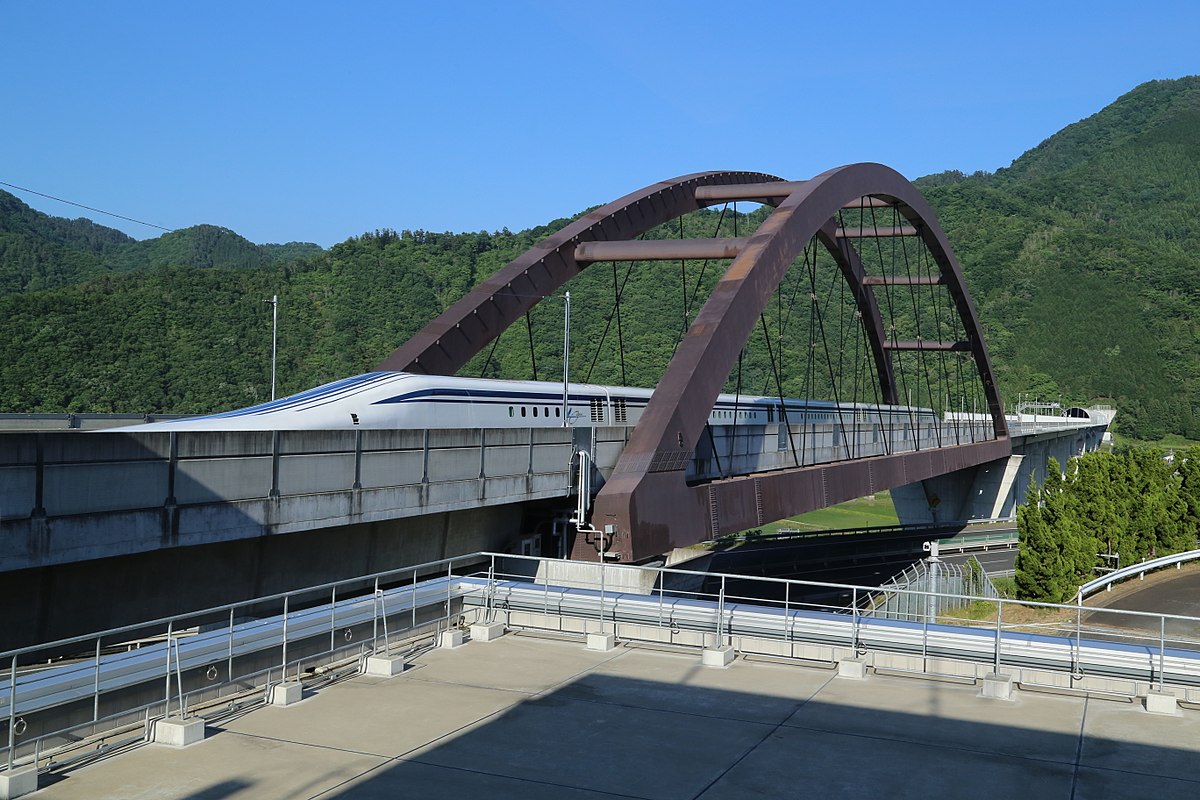
Image: Maryland GovPics, SC Maglev Test Ride (17844163173), CC BY 2.0
Despite being primarily focused on domestic expansion, Japan's L0 Series maglev technology is gaining international attention through ambitious cross-border projects. You'll find JR Central actively exploring opportunities to share their pioneering/innovative/cutting-edge technology with other nations, particularly in the United States and China.
The Northeast Maglev project between Washington D.C. and Baltimore stands out as a promising venture, with operations potentially beginning by 2027-2028. While talks with the Obama administration showed initial promise, policy shifts under Trump's presidency temporarily slowed progress.
Meanwhile, China's interest in the technology has led to CRRC's development of their own Maglev project, the CRRC Maglev 3.0 prototype. These international developments, documented in various International Journal publications, demonstrate the growing global appeal of Japan's revolutionary maglev technology.

